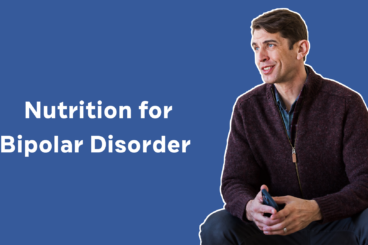This study investigated the treatment of ADHD symptoms with omega-3 supplements. Thisis a very cool study because 1) they measure blood levels of omega-3s 2) it lasted for along time (4 months) 3) these were very symptomatic kids (90% on the Conner’s ADHD scale and were not medicated. Also the study used very robust amounts of omega-3s and the researchers also investigated whether DHA or EPA was superior. The doses in the groups were: EPA 1109 mg and DHA 108 mg; a DHA-rich fish oil providing EPA 264 mg and DHA 1032 mg; or a safflower oil (control) providing LA 1467 mg/d (omega-6). While the primary outcomes measure did not show significant differences, the blow levels of DHA was correlated with better reading and less oppositional behavior as rated by parents. Not a home run for omega-3s, but certainly something worth investigating if your child has a low intake of omega-3s and attentional/behavioral problems.
| Authors | CM Milte, N Parletta, JD Buckley, AM Coates, RM Young, PR Howe |
| Institution | Nutritional Physiology Research Centre, University of South Australia |
| Publication Name | Nutrition |
| Publication Date | June 2012 |
OBJECTIVE:
To determine the effects of an eicosapentaenoic acid (EPA)-rich oil and a docosahexaenoic acid (DHA)-rich oil versus an ω-6 polyunsaturated fatty acid-rich safflower oil (control) on literacy and behavior in children with attention-deficit/hyperactivity disorder (ADHD) in a randomized controlled trial.
METHODS:
Supplements rich in EPA, DHA, or safflower oil were randomly allocated for 4 mo to 90 Australian children 7 to 12 y old with ADHD symptoms higher than the 90th percentile on the Conners Rating Scales. The effect of supplementation on cognition, literacy, and parent-rated behavior was assessed by linear mixed modeling. Pearson correlations determined associations between the changes in outcome measurements and the erythrocyte fatty acid content (percentage of total) from baseline to 4 mo.
RESULTS:
There were no significant differences between the supplement groups in the primary outcomes after 4 mo. However, the erythrocyte fatty acid profiles indicated that an increased proportion of DHA was associated with improved word reading (r = 0.394) and lower parent ratings of oppositional behavior (r = 0.392). These effects were more evident in a subgroup of 17 children with learning difficulties: an increased erythrocyte DHA was associated with improved word reading (r = 0.683), improved spelling (r = 0.556), an improved ability to divide attention (r = 0.676), and lower parent ratings of oppositional behavior (r = 0.777), hyperactivity (r = 0.702), restlessness (r = 0.705), and overall ADHD symptoms (r = 0.665).
CONCLUSION:
Increases in erythrocyte ω-3 polyunsaturated fatty acids, specifically DHA, may improve literacy and behavior in children with ADHD. The greatest benefit may be observed in children who have comorbid learning difficulties.
